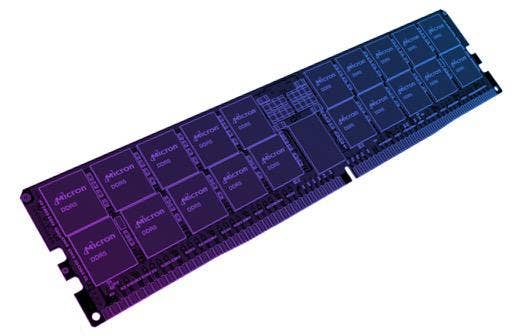Micron Gives Partners Early DDR5 DRAM Access With New Program
The memory vendor wants to help partners prepare for a major leap in memory performance with its new Technology Enablement Program. ‘Just from a pure memory standpoint, it‘s a pretty stark upgrade compared to current systems in just the raw compute power that the memory enables,’ a Micron representative says.

Micron Technology wants to get channel partners ready for the major leap in memory performance offered by DDR5 DRAM with its new Technology Enablement Program.
The Boise, Idaho-based company announced the new program, saying that it will help partners design, develop and quality next-generation computing platforms by providing them early access to products, technical resources and ecosystem partners, which include chip design vendors Cadence and Synopsys as well as memory component vendors Montage, Rambus and Renesas and Synopsys.
[Related: Intel Launches 3rd-Gen Xeon Scalable CPUs: For 4, 8 Sockets Only]
The launch of the program comes after Micron said in January that it had begun sampling its DDR5 Registered DIMMs, which it said provides double the memory density and more than an 85 percent increase in performance over DDR4 while improving reliability for server workloads.
Jim Jardine, director of business development of Micron‘s Compute and Networking Business Unit, told CRN that the goal of the new Technology Enablement Program is the “build confidence in a product that is fairly new and very exciting for the industry,” particularly because of the implications DDR5 will have for the increasing core counts seen in recent server processors from Intel and AMD.
“It will be the first product at least from a memory perspective that increases the bandwidth per core for quite a while,” he said. “If you‘re to go look at the [progression of core counts] in the modern data center and the amount of bandwidth that’s made available to them, even though memory has been increasing in bandwidth over time, the core counts have been just exploding. So you’ve had this marginal degradation of bandwidth per core over time, and we’ll see that tick up for the first time with DDR5 in quite a while.”
With some customers testing early DDR5 samples now, Micron expects larger scale customer sampling and qualification sampling in November and December, with production expected in spring of 2021, according to Jardine, so Micron is hoping to give partners plenty of time to prepare.
In terms of what opportunities DDR5 will provide channel partners, Jardine said it will be both in the deployment of new servers and replacement of existing infrastructure. It will be especially appealing to partners who focus on high-performance systems, he added.
“Just from a pure memory standpoint, it‘s a pretty stark upgrade compared to current systems in just the raw compute power that the memory enables,” he said. ”The channel is usually pretty quick to adopt on server technology. It’s typically been ahead of the OEMs.”
In contrast to previous programs, the Technology Enablement Program for DDR5 offers much “greater depth, especially at the earlier stages,” according to Jardine. This means going beyond the physical samples Micron has traditionally offered in previous programs to providing electrical and thermal models and ecosystem support that will aid with the develop of not just server platforms, but client and embedded systems as well. The program will also provide a “deeper” training to help partners evaluate the products and inform designs at the system and rack levels.
“Making sure folks completely understand how memory and other components interact within the rack is something we‘re keen to do,” he said.
Ryan Baxter, senior director of marketing of Micron‘s Compute and Networking Business Unit, said with the large leap in performance offered by DDR5, there is a “trade-off of slightly more complexity from a system perspective more complexity on the module side” as well as increased power and thermals. For those reasons, he said, the Technology Enablement Program will be an important resource.
“Being able to leverage models and to leverage knowledge around how do you plan around increased complexity, slightly increased power and thermals for somebody that‘s looking for something like DDR5, [this is us] trying to get ahead of the market a little bit and enable key players with new concepts,” he said.